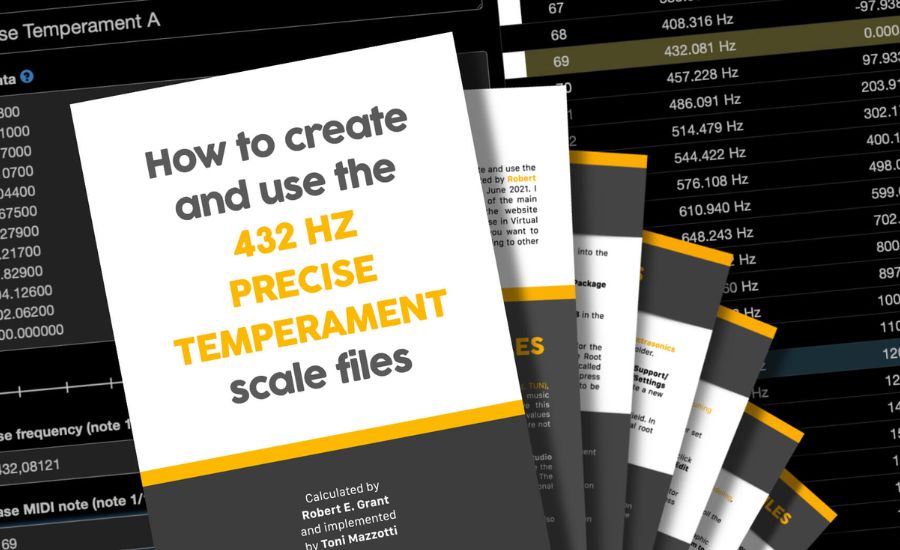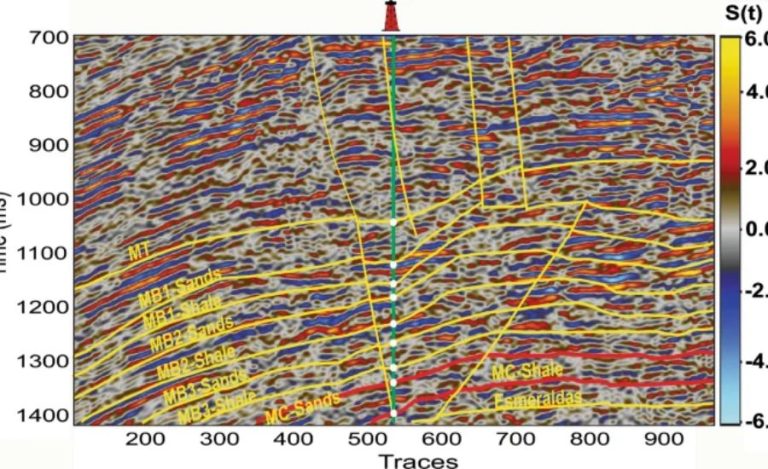432hz Precise Temprament In Arturia Pigments 5 Modern Relevance, Psychological, Listener’s Perception, & More
Introduction
In the realm of current music creation, Arturia Colors stands apart as a strong virtual synthesizer known for its flexibility and far reaching sound plan capacities. Among the many tuning choices accessible, the 432Hz disposition has acquired consideration for its indicated regular reverberation and relieving characteristics. This article dives profound into the reconciliation of 432Hz tuning inside Arturia Shades, investigating how performers can outfit this novel recurrence to upgrade their innovative result. In this article we’ll also read about “432hz precise temprament in arturia pigments 5” in detail.
Understanding Arturia Pigments
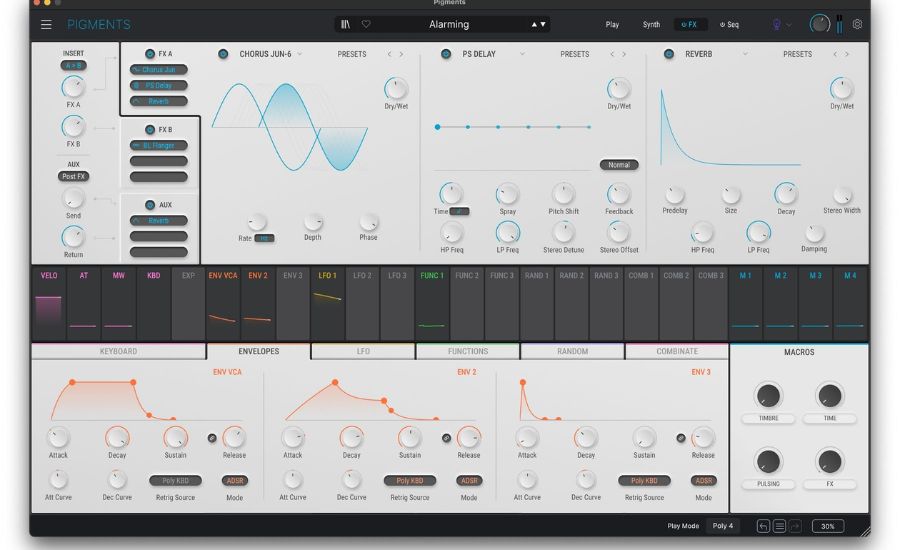
Arturia Colors is praised for its inventive way to deal with sound union, consolidating various blend motors, including wavetable, virtual simple, granular combination, and examining. This synthesizer gives a vigorous stage to sound fashioners and makers of all expertise levels, offering a broad range of devices that make it simple to try different things with various dispositions, including the undeniably well known 432hz precise temperament in arturia pigments 5 tuning.
Features and Capabilities
Arturia Shades is loaded with highlights that take care of a wide scope of sound plan needs. The double blend motors consider layering different sound sorts, empowering the production of rich, complex surfaces. Continuous visual criticism, a broad regulation network, and a set-up of underlying impacts make it an extensive device for both customary and trial music creation.
Whether you’re making encompassing soundscapes or many-sided lead synths, Shades’ easy to understand interface and strong capacities offer the adaptability expected to investigate new sonic regions. Among these regions is the domain of non-standard tunings, with 432hz precise temperament in arturia pigments 5 disposition being an especially captivating choice.
Benefits of Using Arturia Pigments
The essential strength of Arturia Shades lies in its adaptability and profundity. It permits clients to explore different avenues regarding various amalgamation strategies at the same time, offering an unmatched scope of sound plan prospects. This adaptability reaches out to the exact tuning of boundaries, making it an ideal stage for those keen on investigating non-standard dispositions like 432Hz.
What is 432Hz Temperament?
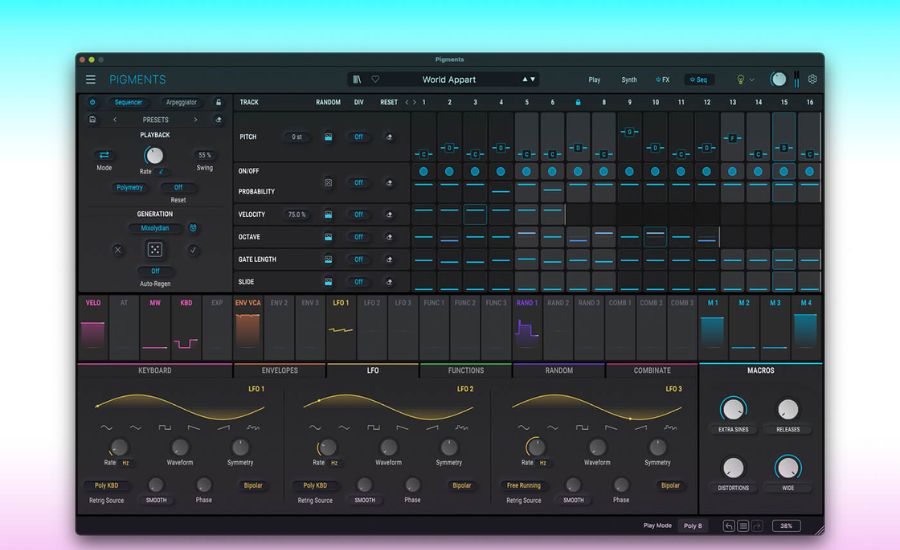
432Hz tuning, frequently alluded to as “Verdi’s A” or “the normal tuning,” is trusted by some to resound all the more normally with the human body and the universe. While the standard show pitch is set at A=440Hz, 432hz precise temperament in arturia pigments 5 precise temperament in arturia pigments 5 tuning has acquired a committed following, especially among performers and sound mending specialists who contend that it makes a more amicable and loosening up listening experience.
Historical Background
The idea of 432Hz as a characteristic recurrence can be followed back to old music hypothesis and crafted by prestigious writers like Giuseppe Verdi, who supported for this tuning. Notwithstanding its authentic roots, 432Hz tuning was eclipsed in the twentieth century when A=440Hz turned into the business standard, generally because of the impact of the music business and administrative bodies.
Modern Relevance in Music
Today, 432Hz tuning is encountering a resurgence, especially in classes that underline unwinding and mental lucidity, for example, surrounding, reflection, and trendy music. Defenders of this tuning contend that it advances a feeling of prosperity, lines up with the body’s regular rhythms, and makes a more vivid and quieting listening experience.
How to Set Precise Temperament in Arturia Pigments
Setting up 432hz precise temperament in arturia pigments 5 temperament in Arturia Pigments is a straightforward process, but it requires careful attention to detail to ensure accuracy. Below is a step-by-step guide to help you get started with this unique tuning:
Step-by-Step Guide
- Open Arturia Colors: Send off the synthesizer and select an underlying preset or make another one without any preparation.
- Access the Tuning Area: Explore to the tuning segment, regularly found in the worldwide settings or under the expert part of the synth.
- Change the A4 Recurrence: Change the reference recurrence from 440Hz to 432Hz by composing in the new worth or utilizing the calibrate controls.
- Calibrate Oscillators: If your sound depends on different oscillators, guarantee every one is tuned precisely to keep up with the respectability of the 432hz precise temperament in arturia pigments 5 personality.
- Save Your Preset: Once happy with the tuning, save your preset for sometime later.
Importance of Precision
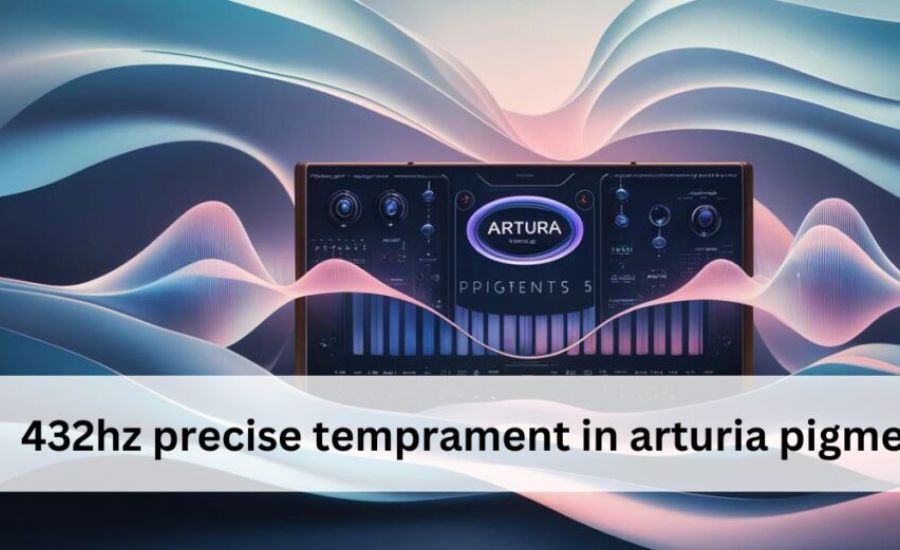
While working with non-standard tunings like 432Hz, accuracy is pivotal. Indeed, even minor deviations can change the general sound and the planned mental effect. Arturia Colors’ adjusting controls and constant visual criticism make it simpler to keep up with this accuracy, guaranteeing that your structures resound as planned.
Benefits of Using 432Hz Temperament
The 432Hz tuning is commended for its stylish characteristics as well as for its apparent advantages on the audience’s psyche and body. Albeit logical proof supporting these cases is restricted, numerous artists and audience members the same report positive encounters while drawing in with music tuned to this recurrence.
Psychological and Emotional Benefits
Audience members frequently depict a feeling of tranquility and mental lucidity when presented to music tuned to 432Hz. This recurrence is said to resound all the more normally with the human body, decreasing pressure and advancing an increased profound reaction. Accordingly, 432hz precise temperament in arturia pigments 5 tuning has become well known in music treatment and sound recuperating rehearses.
Artistic Expression
For performers, 432Hz offers an extraordinary material for imaginative articulation. The marginally lower pitch contrasted with 440Hz gives the music a hotter, more natural feel, which can be especially compelling in classifications that stress environment and feeling. Trying different things with this tuning can open new inventive roads, permitting specialists to investigate various mind-sets and surfaces that probably won’t be attainable with standard tuning.
Integrating 432Hz Temperament in Your Workflow
Incorporating 432Hz tuning into your regular music production workflow can be seamless with the right approach. Here are some practical tips to help you integrate this tuning into your projects:
Practical Tips
- Start with Presets: Use or create presets already tuned to 432hz precise temperament in arturia pigments 5 to avoid manual adjustments every time.
- Consistency Across Instruments: Ensure all instruments in your composition are tuned to 432Hz to maintain harmonic consistency.
- Experiment with Genres: Don’t limit yourself to ambient or meditative music. Try incorporating 432Hz tuning into different genres to see how it influences the overall sound and feel.
- Use Visual Tools: Utilize spectrum analyzers and tuners to visually confirm that your instruments are accurately tuned to 432Hz.
Examples from Professionals
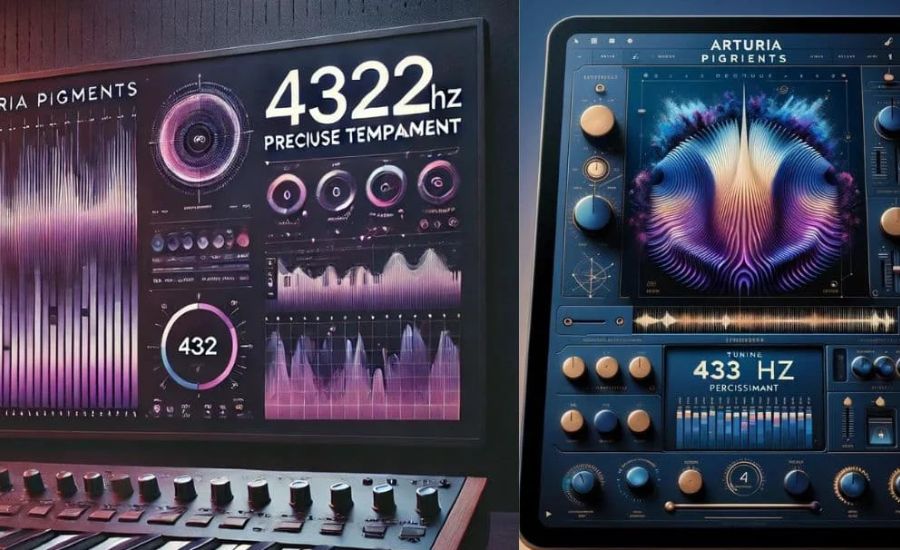
Numerous craftsmen work in encompassing, reflection, and mending music have taken on 432hz precise temperament in arturia pigments 5 as their go-to tuning. These experts frequently refer to the recurrence’s capacity to make a more profound association with their crowd and improve the vivid nature of their music. Gaining from their methods can move your own tests with 432Hz.
Comparing 432Hz to 440Hz
The discussion somewhere in the range of 432Hz and 440Hz is quite possibly of the most discussed subject in the music local area. While 440Hz is the business standard, 432Hz offers a novel appeal that has earned a devoted following.
Differences in Sound
From the start, the distinction somewhere in the range of 432hz precise temperament in arturia pigments 5 and 440Hz could appear to be unpretentious, however it turns out to be more observable over the long run. Music tuned to 432Hz is much of the time depicted as milder, hotter, and more charming, though 440Hz can be seen as somewhat more keen and more extraordinary.
Impact on Listener’s Perception
The effect of 432Hz on audience members can change. Certain individuals feel more loose and sincerely drew in while paying attention to music in this tuning, while others may not see a tremendous distinction. The impression of sound is abstract, and the decision somewhere in the range of 432Hz and 440Hz at last relies upon the expected profound effect of the music.
The Science Behind 432Hz
The 432Hz recurrence is encircled by different hypotheses and cases in regards to its logical premise. While a portion of these cases are established in pseudoscience, a couple of logical examinations support tuning to normal frequencies.
Frequency and Vibration Theory
Defenders of 432Hz contend that this recurrence adjusts all the more intimately with normal frequencies, like the Schumann Reverberation (the World’s regular vibration). This hypothesis recommends that music tuned to 432Hz is more agreeable with the regular world and the human body.
Studies Supporting 432Hz
A few examinations have investigated the impacts of various frequencies on human physiology, with 432Hz being connected to more loosened up brainwave action and diminished feelings of anxiety. In any case, more thorough logical examination is expected to approve these cases completely.
Customizing Arturia Pigments for 432Hz
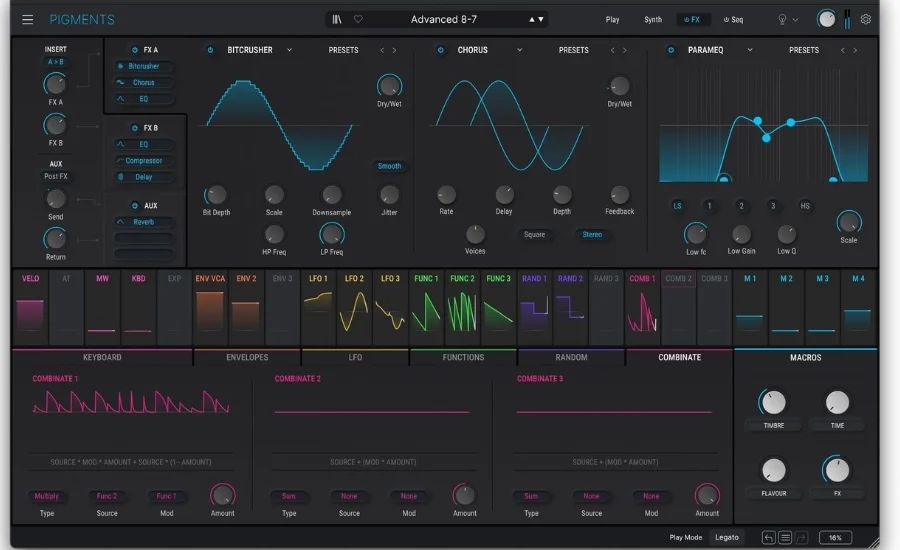
Arturia Pigments offers extensive customization options that allow you to fully embrace the 432Hz tuning in your sound design process.
Advanced Settings
Notwithstanding essential tuning changes, you can dig into further developed settings to improve your sounds for 432hz precise temperament in arturia pigments 5. This incorporates changing balance sources, applying miniature tuning, and investigating non-standard scales that supplement the 432Hz disposition.
Creative Use of Modulation and Effects
Colors’ strong adjustment network and impacts area can be utilized inventively to improve the interesting attributes of 432hz precise temperament in arturia pigments 5 tuning. Trying different things with channel balance, reverb, and delay at 432Hz can prompt new sonic surfaces and climates, further advancing your pieces.
Real-World Applications
The 432Hz tuning is not just a theoretical concept; it has practical applications across various genres and music production environments.
Case Studies
Various craftsmen have effectively coordinated 432hz precise temperament in arturia pigments 5 into their music, delivering works that reverberate profoundly with their crowds. From surrounding music makers to old style artists, the utilization of 432Hz is assorted and effective.
Genre-Specific Uses
While 432Hz is generally connected with encompassing and thoughtful music, it can likewise be utilized in different sorts, like traditional, jazz, and electronic dance music. The key is testing and tracking down the right equilibrium that suits the class and your imaginative vision.
Exploring Presets and Sound Design in Arturia Pigments
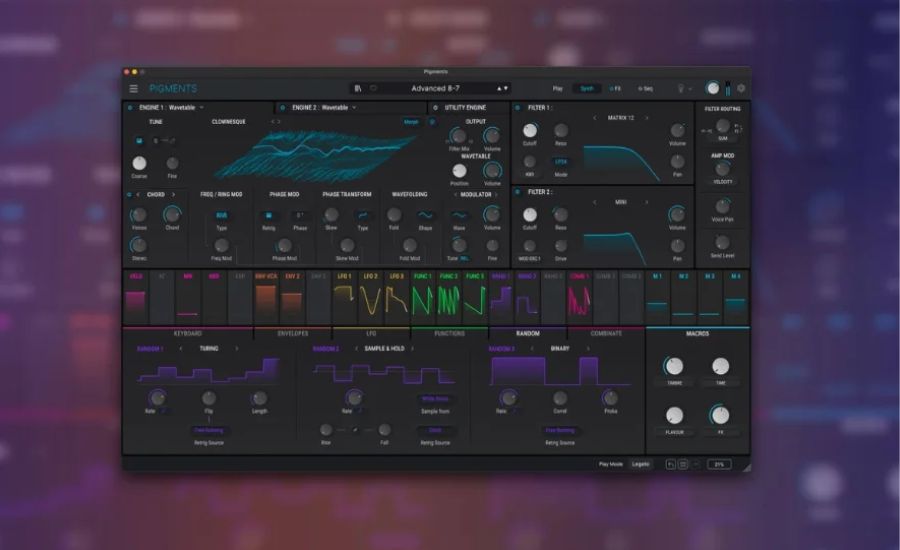
One of Arturia Pigments’ strengths is its vast library of presets, which can be a great starting point for creating 432Hz-tuned music.
Creating Unique Sounds
By beginning with a preset and calibrating it to 432hz precise temperament in arturia pigments 5 , you can make one of a kind sounds that hang out in your organizations. Trying different things with various oscillators, channels, and impacts while keeping up with the 432Hz tuning can prompt creative sound plan.
Utilizing Pre-Designed Presets
Numerous preset libraries as of now incorporate sounds tuned to 432Hz. These can be a superb asset for rapidly incorporating 432hz precise temperament in arturia pigments 5 into your undertakings, permitting you to zero in on imaginative articulation as opposed to specialized changes.
Exploring Temperament Tuning in Arturia Pigments
Demeanor tuning alludes to the means of tuning used to separate an octave into a progression of pitches or notes. The most well-known personality in Western music is equivalent disposition, where the octave is separated into 12 equivalent parts. In any case, there are different personalities that can be utilized to accomplish novel apparent attributes.
While tuning to 432Hz, investigating elective demeanors can yield unmistakable and expressive outcomes. Arturia Colors permits you to dig into these personality choices, giving a rich scene to melodic trial and error.
Equal Temperament at 432Hz
The least difficult methodology is to utilize equivalent personality at 432Hz. This will in any case create a discernibly different sound contrasted with 440Hz tuning. The change in tuning quietly modifies the sounds, giving your music a hotter and more normal feel. Equivalent demeanor at 432Hz is great for those hoping to hold a recognizable construction while investigating new sonic domains.
Just Intonation
Just sound is a tuning framework in view of entire number proportions between pitches, making unadulterated stretches that are much of the time more consonant than those in equivalent demeanor. When utilized at 432Hz, just pitch can deliver rich, resounding harmonies that are profoundly satisfying to the ear. This tuning is especially compelling in sorts where concordance and reverberation are foremost.
Facts:
- Arturia Pigments Overview: Arturia Pigments is a powerful virtual synthesizer known for its versatility, featuring multiple synthesis engines like wavetable, virtual analog, granular synthesis, and sampling. It offers extensive sound design capabilities, making it popular among musicians and sound designers.
- 432Hz Tuning: The 432Hz tuning, also known as “Verdi’s A” or “the natural tuning,” is believed to resonate more naturally with the human body and the universe compared to the standard 440Hz tuning. It is often associated with a calming and harmonious listening experience.
- Setting Up 432Hz in Arturia Pigments: Musicians can easily set up the 432Hz tuning in Arturia Pigments by adjusting the A4 reference frequency from 440Hz to 432Hz in the tuning section of the synthesizer.
- Benefits of 432Hz Tuning: Many musicians and listeners report that 432Hz tuning promotes a sense of well-being, reduces stress, and enhances emotional responses. It is especially popular in genres like ambient, meditation, and healing music.
- Precision in Tuning: Precision is crucial when working with non-standard tunings like 432Hz. Even minor deviations can affect the intended sound and its psychological impact on the listener.
- Comparison with 440Hz Tuning: Music tuned to 432Hz is often described as warmer, softer, and more natural, while 440Hz is perceived as sharper and more intense. The choice between these tunings depends on the desired emotional effect of the music.
- Customization in Arturia Pigments: Arturia Pigments allows for extensive customization, including adjusting modulation sources, applying micro-tuning, and exploring non-standard scales that complement the 432Hz temperament.
- Real-World Applications: 432Hz tuning is used by a variety of artists, particularly in ambient, classical, jazz, and electronic dance music, to create music that resonates deeply with audiences.
Summary:
The article explores the integration of 432Hz tuning within Arturia Pigments 5, a versatile virtual synthesizer renowned for its comprehensive sound design capabilities. It delves into the concept of 432Hz tuning, its historical background, and its modern relevance in music production. The article provides a step-by-step guide on setting up 432Hz precise temperament in Arturia Pigments, emphasizing the importance of precision in tuning to maintain the intended emotional impact.
It also discusses the benefits of using 432Hz tuning, particularly in genres that emphasize relaxation and emotional clarity. The article compares 432Hz with the standard 440Hz tuning, highlighting the subtle yet significant differences in sound and listener perception. Additionally, it touches on the customization options available in Arturia Pigments, enabling musicians to fully embrace the 432Hz tuning in their sound design process. Finally, it provides real-world examples and practical tips for integrating 432Hz temperament into various music genres.
FAQs:
Q1: What is 432Hz tuning, and why is it significant?
A1: 432Hz tuning, also known as “Verdi’s A,” is believed to resonate more naturally with the human body and the universe compared to the standard 440Hz tuning. It is significant because many musicians and listeners report that it promotes a sense of well-being, reduces stress, and enhances emotional responses.
Q2: How can I set up 432Hz precise temperament in Arturia Pigments 5?
A2: To set up 432Hz tuning in Arturia Pigments, navigate to the tuning section of the synthesizer and adjust the A4 reference frequency from 440Hz to 432Hz. Ensure all oscillators and instruments are tuned accurately to maintain harmonic consistency.
Q3: What are the benefits of using 432Hz tuning in music production?
A3: The benefits of using 432Hz tuning include creating a warmer, softer, and more natural sound. It is particularly effective in genres that emphasize relaxation, meditation, and emotional clarity, such as ambient music.
Q4: How does 432Hz tuning compare to the standard 440Hz tuning?
A4: 432Hz tuning is often described as warmer and more harmonious, while 440Hz tuning is perceived as sharper and more intense. The choice between these tunings depends on the desired emotional effect of the music.
Q5: Can I use 432Hz tuning in all music genres?
A5: Yes, 432Hz tuning can be used across various music genres, including ambient, classical, jazz, and electronic dance music. Experimenting with 432Hz in different genres can lead to unique and innovative soundscapes.
Q6: What customization options does Arturia Pigments offer for 432Hz tuning?
A6: Arturia Pigments allows for extensive customization, including adjusting modulation sources, applying micro-tuning, and exploring non-standard scales that complement the 432Hz temperament. These options enable musicians to create unique sounds tuned to 432Hz.
Read more information About technology trendaddictor

